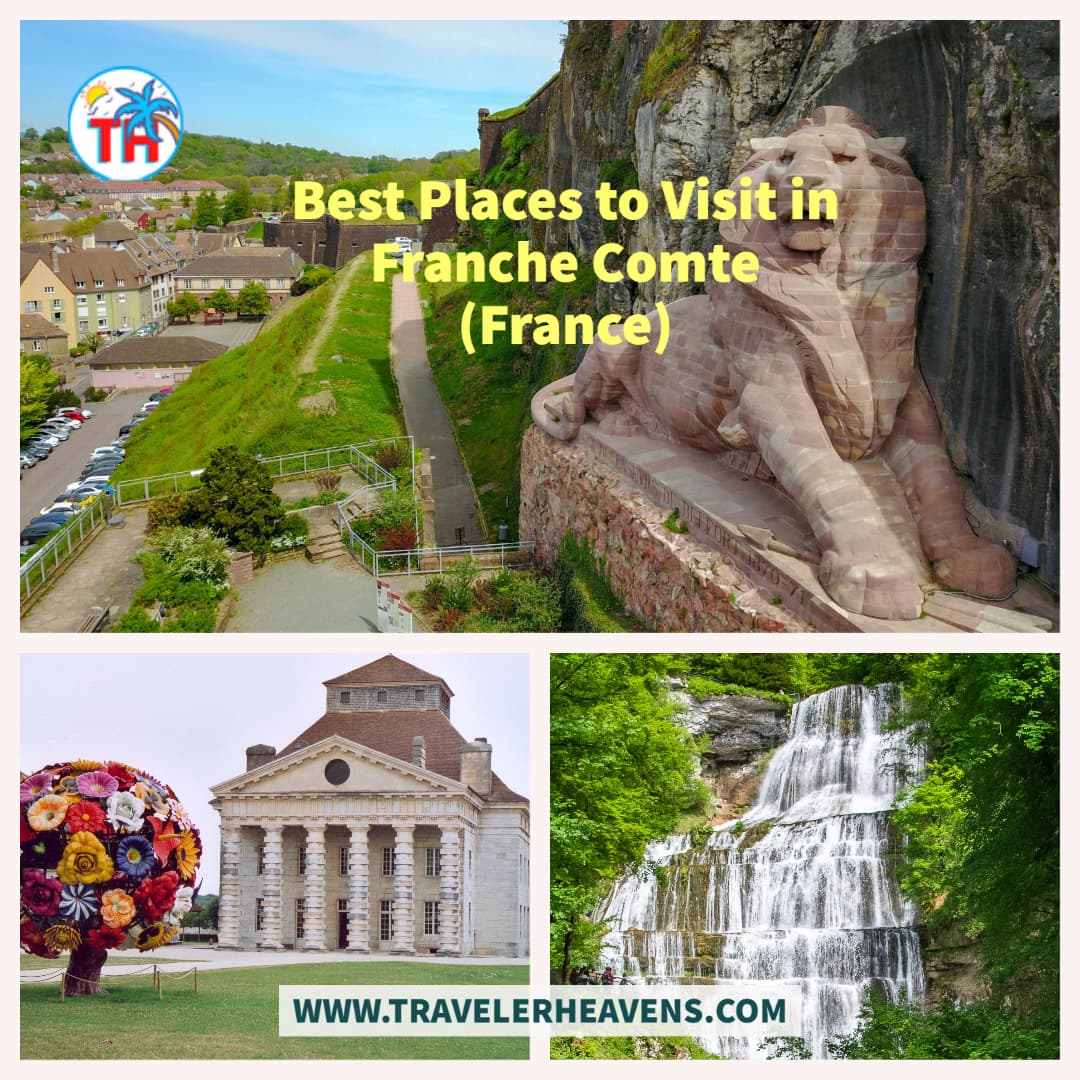Are you searching for the Best Places to Visit in Franche Comte? Are you thinking of a trip to North America and wondering what to explore in Franche Comte? We’ve got you covered. Explore the untamable countryside of France-Comté, where steelhead valleys, lakes, and waterfalls abound. Discover the region’s history of conflict and bravery, reflected in its many forts and monuments.
Visit the birthplace of some of France’s most renowned figures – Louis Pasteur, Victor Hugo, and Gustave Courbet – and be inspired by their remarkable contributions to culture and science. Experience the region’s spirit with the famous Comtois motto, “Nenni ma foi!” – “Not on your life!” – Discover the best things to do in France-Comté.
Besançon
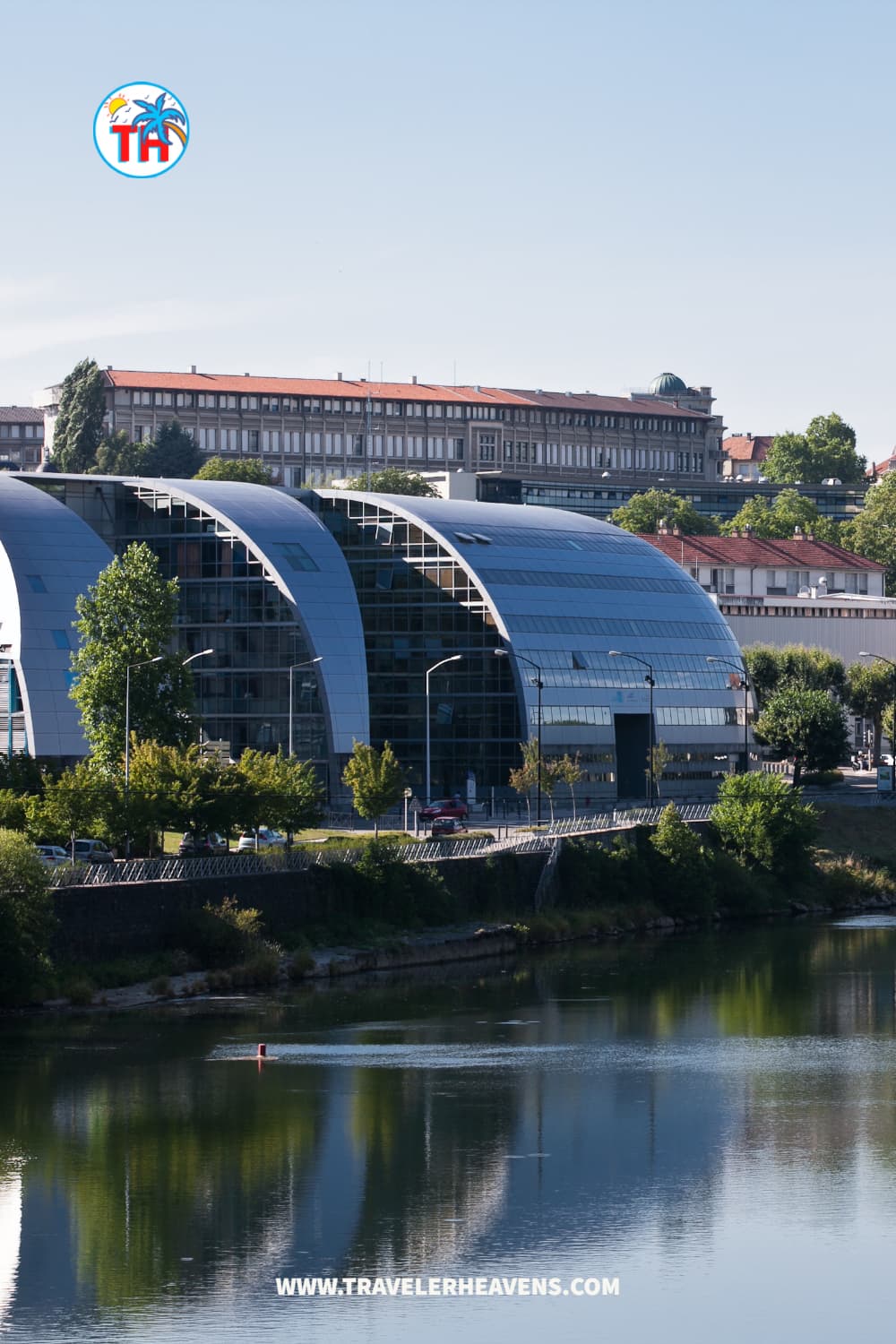
Besançon is one of the best places to visit in Franche Comte. In the historic center of Besançon, you will find many interesting cultural attractions and a horseshoe-shaped bend of the Doubs River. With its Romanesque choir and Fra Bartolomeo’s celebrated Virgin and Child with Saints painting, the Cathédrale Saint-Jean dates back to the 12th century.
In the vicinity of the cathedral stands the Place Archéologique Castan, a shady English-style garden with classical-era Corinthian columns. The town’s main street, Grande Rue, follows the line of the Roman road Vicus Magnus. The Grand Rue’s uniform houses were laid out in the 17th century by Sébastien Le Prestre de Vauban, the renowned French military engineer who perfected the craft of defensive fortifications.
Vauban created the Citadelle de Besançon, a remarkable fortress set 100 meters above the old town, offering stunning views. With its 20-meter-high ramparts, the Citadel is considered a masterpiece of Vauban’s work and has been designated a UNESCO World Heritage Site. The Citadel is open to the public for visits; the site has a restaurant, snack bar, and gift shop.
The Citadel also houses three museums: the Musée de la Résistance et de la Déportation (Museum of French Resistance and Deportation), the Musée Comtois devoted to the culture, heritage, landscape, and cuisine of the Franche-Comté region (a highlight is the puppet theater), and the Museum d’Histoire Naturelle de Besançon (Natural History Museum).
Another exceptional museum, the Musée des Beaux-Arts et d’Archéologie, in the old town near the river, displays a collection of archeological objects and 15th- to 20th-century paintings, including works by Tintoretto, Rubens, Goya, Courbet, Bonnard, and Picasso.
Lion of Belfort
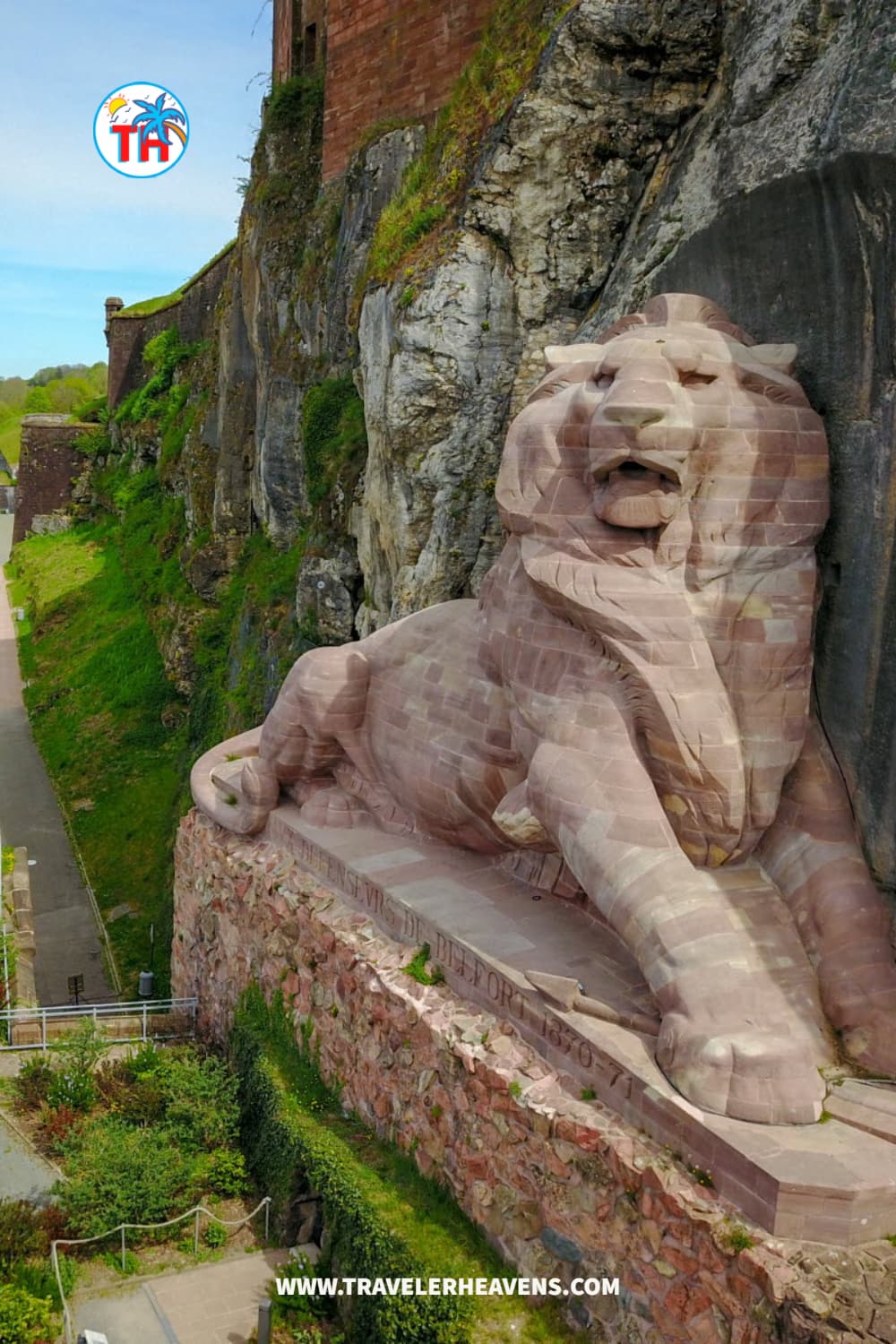
Welcome to Traveler Heavens and our exploration of one of the most iconic monuments in France – The Lion of Belfort. Located in the city of Belfort in the Franche-Comté region of eastern France, the Lion of Belfort is a monument that symbolizes the city’s heroic resistance during the Franco-Prussian War of 1870-1871. This impressive monument was designed by the French sculptor Auguste Bartholdi and is considered one of his most famous works.
The lion stands atop a rock on the left bank of the Savoureuse River and is made from red sandstone. It is impressive, standing 30 feet tall and measuring over 50 feet in length. The Lion of Belfort symbolizes courage and resilience and is an important reminder of the city’s heroic defense during the Franco-Prussian War.
The town was besieged for over three months, and the people of Belfort held out against the enemy’s superior forces. The lion was erected in 1875 in honor of their bravery. Today, the Lion of Belfort is one of the most visited monuments in France, and it is an iconic symbol of the city. It is a popular spot for tourists who admire the impressive sculpture and take pictures.
It is also a popular spot for locals, who come to pay their respects to the brave citizens who defended their city. The Lion of Belfort is a must-see for anyone visiting the Franche-Comté region, and it is one of the best places to visit in France.
The Lion of Belfort will highlight your trip, whether you’re looking for a day trip or a more extended stay, so if you’re looking for an unforgettable experience, include the Lion of Belfort on your list of places to visit in France.
Baume-les-Messieurs
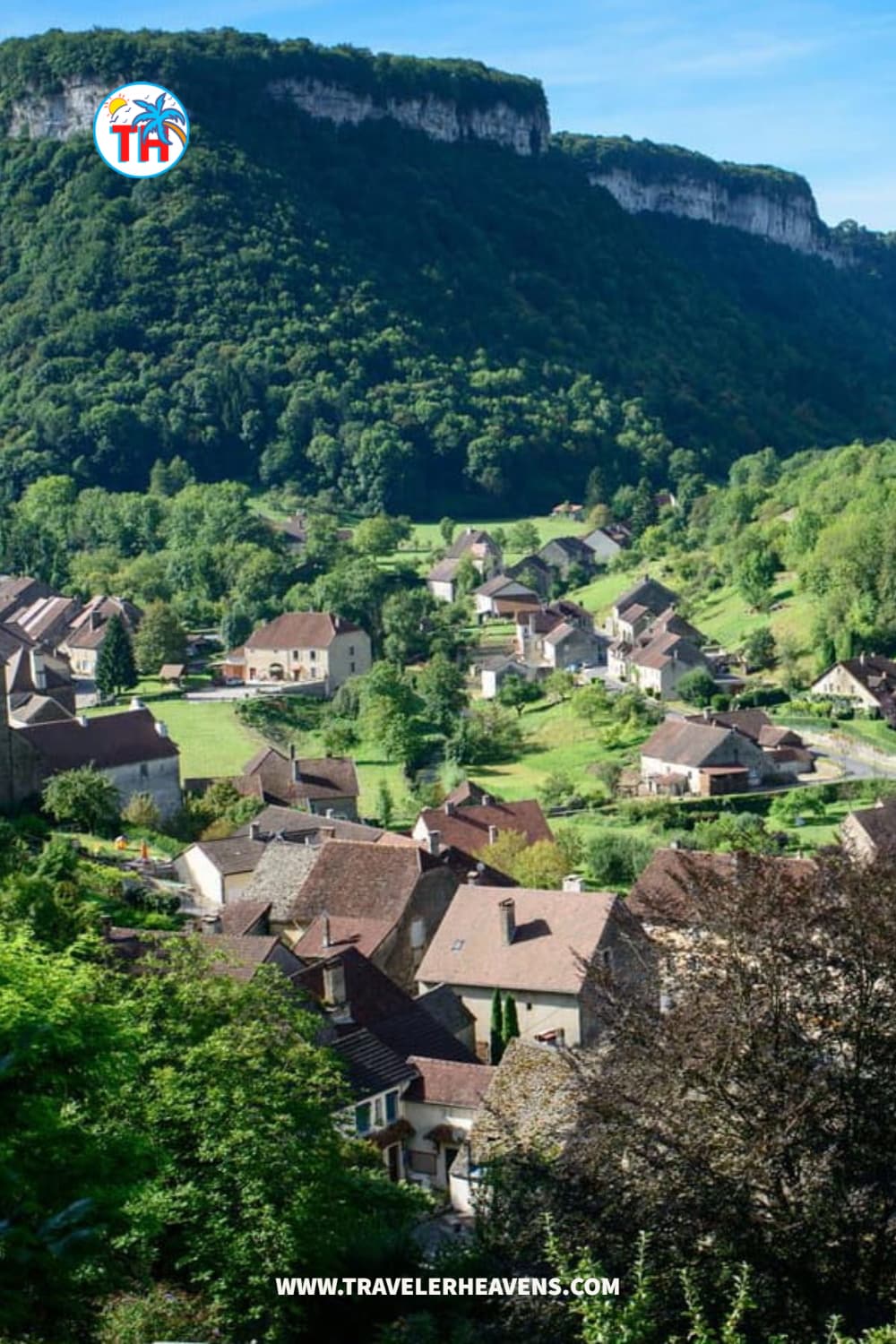
Woodlands surround Baume-Les-Messieurs in a secluded spot where three valleys meet. This gem of the French Jura region is listed as one of France’s Plus Beaux Villages (Most Beautiful Villages). Baume-Les-Messieurs also has an imposing Abbaye Impériale from the Carolingian era.
It is a popular spot for hiking and biking and has several charming villages nearby. The city’s natural surroundings are equally impressive. The 200-million-year-old Grotte de Baume is a 500-meter-long cave filled with stalagmites, stalactites, and waterfalls.
Fort de Joux
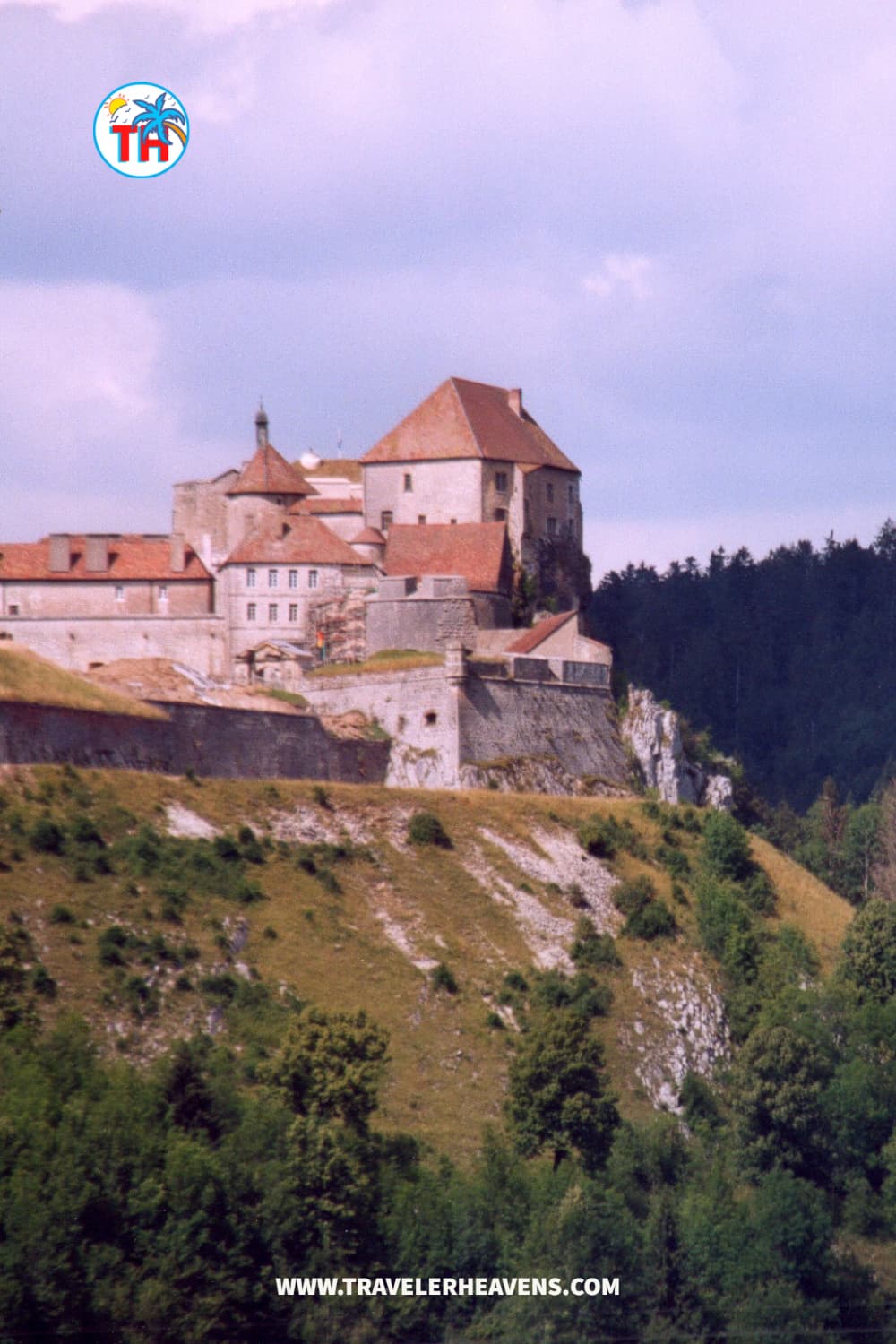
Fort de Joux is one of the best places to visit in France. Located in the Doubs region of the Jura Mountains, it is a spectacular fortress that has been standing since the 17th century. This majestic site is a must-see for anyone visiting the region, as it provides a unique insight into the history and culture of the area. Built in 1692 by the French military, the fort was initially used to protect the border with Switzerland.
It was extensively overhauled and enlarged in 1815 and is now a popular tourist attraction. The defense has many exciting features, including a museum, a chapel, and historic buildings. One of the most impressive features of the fort is its defensive walls. These walls are made up of four concentric rings designed to make them virtually impregnable.
There are also several bastions, which were used to house cannons and other weapons. The fort also had two drawbridges, which allowed troops to cross the river. Inside the fort, visitors can explore the museum, which displays a range of artifacts from the fort’s history. These include weapons, uniforms, and other items used during the fort’s long history.
There is also a chapel, which prisoners of war once used. The defense is also home to several other attractions, including a restaurant and a shop. There are also several hiking trails in the area, which offer stunning views of the surrounding countryside.
Royal Saltworks at Arc-et-Senans
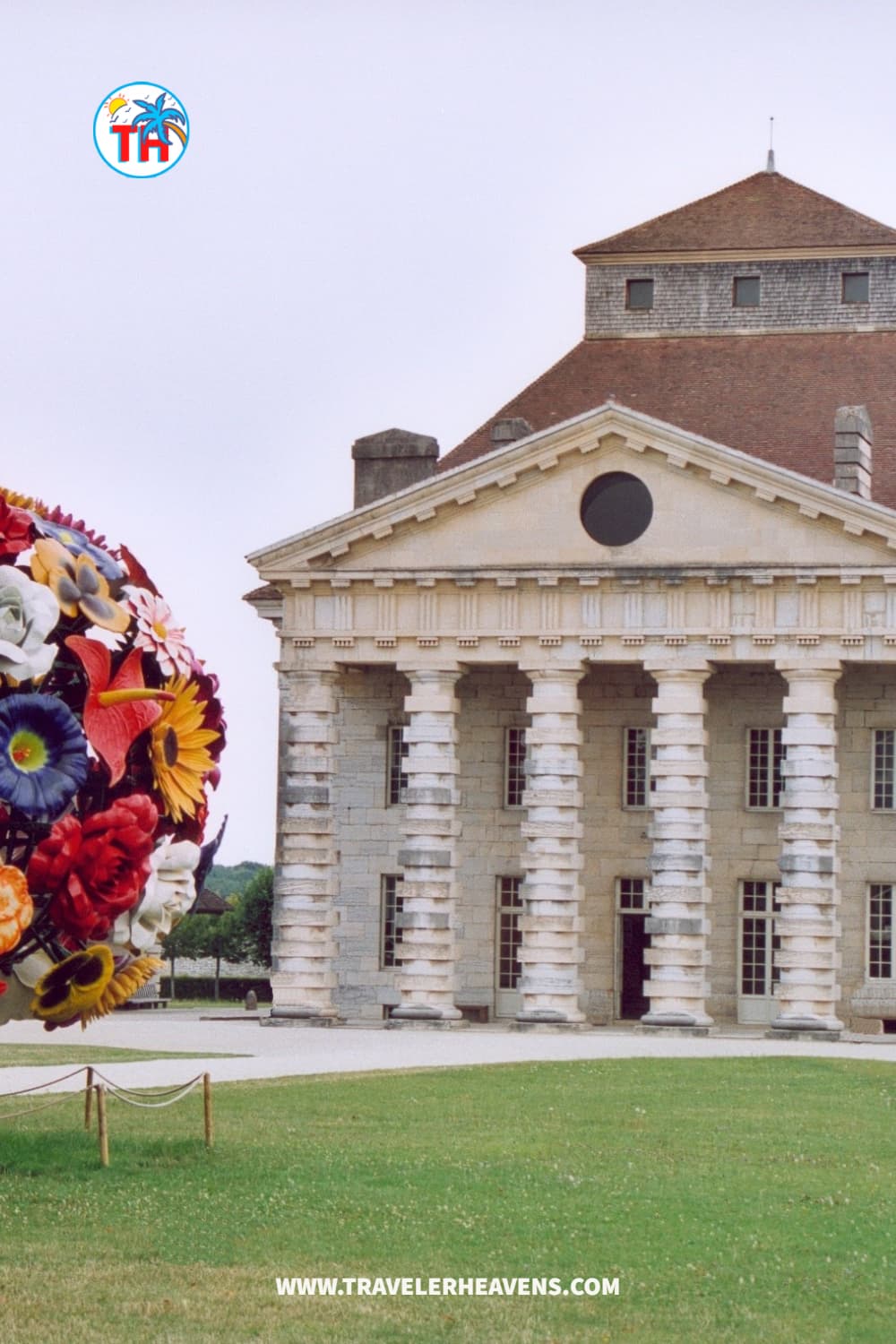
Royal Saltworks at Arc-et-Senans is one of the best places to visit in Franche Comte. The Royal Saltworks at Arc-et-Senans in France is one of the best places to explore the country’s rich history and culture. Located in the Doubs region of eastern France, the saltworks have been operating since the mid-18th century, providing salt to the local population.
The Royal Saltworks is a UNESCO World Heritage Site, recognized for its unique architecture and contribution to the industrial revolution. Claude-Nicolas Ledoux built the Royal Saltworks in 1775 as part of a larger project to bring salt to the region. Ledoux was a renowned French architect and urban planner, and his vision for the saltworks was to create a utopian-style industrial city.
The Royal Saltworks is a remarkable example of his eye, with its symmetrical design and neoclassical style. Today, the Royal Saltworks is a popular tourist attraction, with visitors coming from around the world to explore its fascinating history and architecture. The complex is made up of several buildings, including the main building, the salt storage, the workshops, and the workers’ houses.
Visitors can explore the entire complex and learn about the history of salt production in the region. The Royal Saltworks is also home to several cultural events throughout the year. The annual Salt Festival is held in late summer and features a variety of activities, including concerts, workshops, and exhibitions. The Festival is a great way to experience the culture and history of the region.
Pérouges
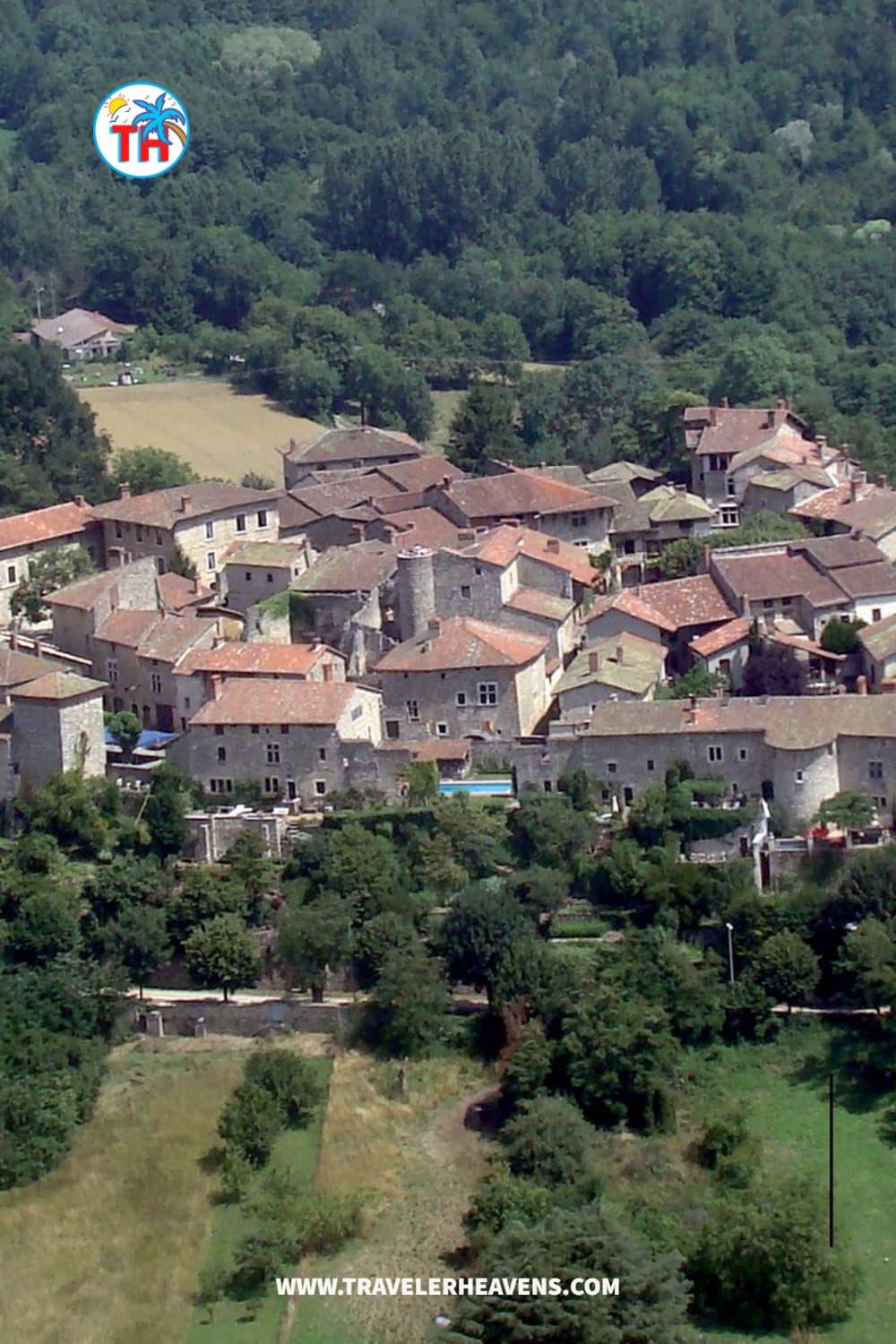
Residents and visitors enter an enchanting medieval world upon stepping through the arched gateway that leads into historic Pérouges, loftily perched on a plateau above the countryside. A maze of atmospheric cobblestone lanes, old stone buildings, and half-timbered houses distinguish this once-wealthy merchants’ town.
Because of its beauty and charm, Pérouges is listed as one of France’s Plus Beaux Villages. This charming medieval town’s storybook quality has made it a popular movie set location. Most notably, Les Trois Mousquetaires was filmed here.
At the heart of the old walled town, the Hostellerie du Vieux Pérouges on the Place du Tilleul invites guests to step back for the night. Guest rooms in various houses (including a 15th-century building) feature traditional decor, canopy beds, antique furniture, and wood-beamed ceilings. The Musée du Vieux Pérouges provides a glimpse into everyday life in Pérouges during centuries past.
Exhibits present historic furniture, cookware, and other household items. The museum also has a traditional weaving workshop, a medieval garden, and a watchtower with spectacular views of the old town. In addition to regional specialties like Volaille de Bresse aux morilles (Bresse Chicken in Morel Sauce) and Galette Pérougienne (a local dessert), the restaurant at the Hostellerie du Vieux Pérouges serves delicious contemporary cuisine such as Grilled Sea Bass with Green Olive Salsa and Roasted Red Pepper Coulis.
Adding to the charm, the restaurant staff wear period costumes. Not to be missed is the 15th-century Eglise Sainte-Marie-Madeleine, a fortress church classified as a Historic Monument. The walls of this somber Gothic church are defensive ramparts, and the small, narrow stained-glass windows were designed to prevent invasions.
Pérouges is known for its lively festivals throughout the year: the Rêveries Véntiennes (Venetian Parade) in April and the Fête Médiévale (Medieval Festival) in June. The Marché de la Creation (Arts and Crafts Market) is held at the end of April or early May on the Chemin des Terreaux.
Several boutiques that sell artisanal crafts and small locally-owned bakeries are found on the Rue des Rondes and the Rue du For. Also on the Rue du For is La Maison des Arts Contemporains de Pérouges, a contemporary art center presenting five expositions yearly.
Dole
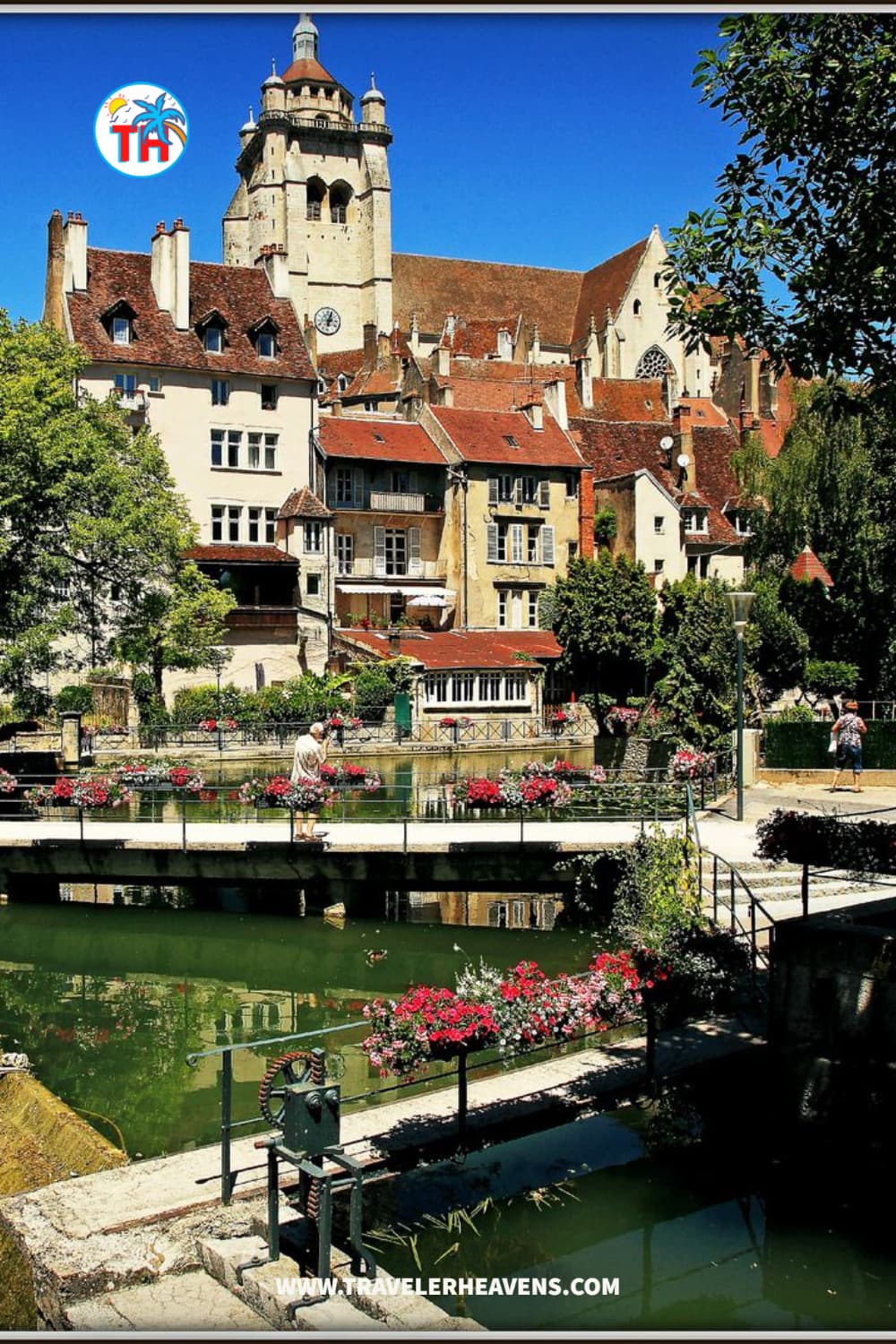
The former capital of the historic Comté de Bourgogne (County of Burgundy), Dole is listed as a Ville d’Art et d’Histore. The town’s old-world character and rich heritage are seen in its impressive architecture, which includes the Collégiale Notre-Dame, a Late Gothic church with a soaring bell tower; the Musée des Beaux-Arts’ archaeology,
European paintings, and contemporary art collections; the 17th-century Hôtel-Dieu (open to the public); and the Maison du Patrimoine, which displays antique bread-making, blacksmiths’ and weaving machines (tours by appointment).
To discover the city, tourists can follow the “Circuit du Chat Perché,” which has 35 stops indicated by sidewalk markers featuring little cats. A highlight of the Circuit du Chat Perché is the picturesque waterfront path alongside the Canal des Tanneurs.
Along the Circuit du Chat, Perché is La Maison Natale de Louis Pasteur, the birthplace of Louis Pasteur. This house overlooking the Canal des Tanneurs is a listed Historical Monument. It has been converted into a museum, presenting Louis Pasteur’s scientific research and his most significant achievements. The museum features entertaining interactive exhibits and games.
Les Cascades du Hérisson
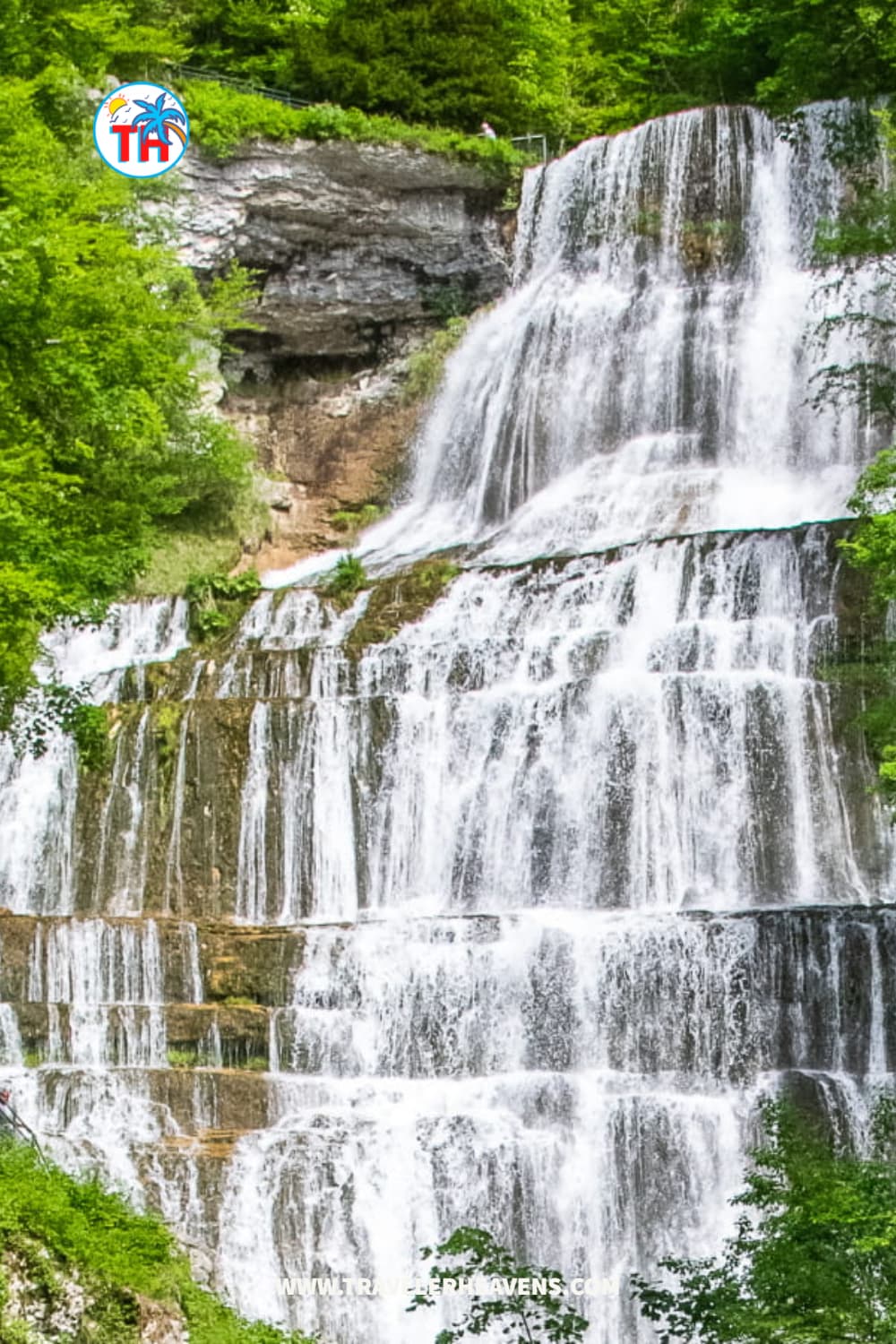
Les Cascades du Hérisson is one of the best places to visit in Franche Comte. Les Cascades du Hérisson in France is one of the best places to visit in the world. Located in the Jura Mountains, it is a breathtaking natural wonder. The cascading waterfalls, lush greenery, and picturesque views make it a must-see destination for any traveler. The Cascades du Hérisson is a series of seven waterfalls that form a continuous cascade down the mountainside.
The highest waterfall is over sixty meters high, and the total descent is approximately two hundred and fifty meters. These waterfalls are fed by the Hérisson River, which originates in the nearby Lake of Vouglans. The Cascades du Hérisson is a popular destination for hikers and outdoor enthusiasts. The trails that wind around the falls are well-marked and easy to navigate.
Visitors can enjoy the spectacular views of the cascades and the surrounding landscape. The courses also lead to nearby lakes and rivers, providing an excellent opportunity to explore the area. The Cascades du Hérisson is also a great place to relax and take in the beauty of nature.
Visitors can take a break from their busy lives and take in the area’s peaceful atmosphere. There are plenty of picnic spots and benches along the trails, making it ideal for a picnic.
Poligny & Comté de Grimont
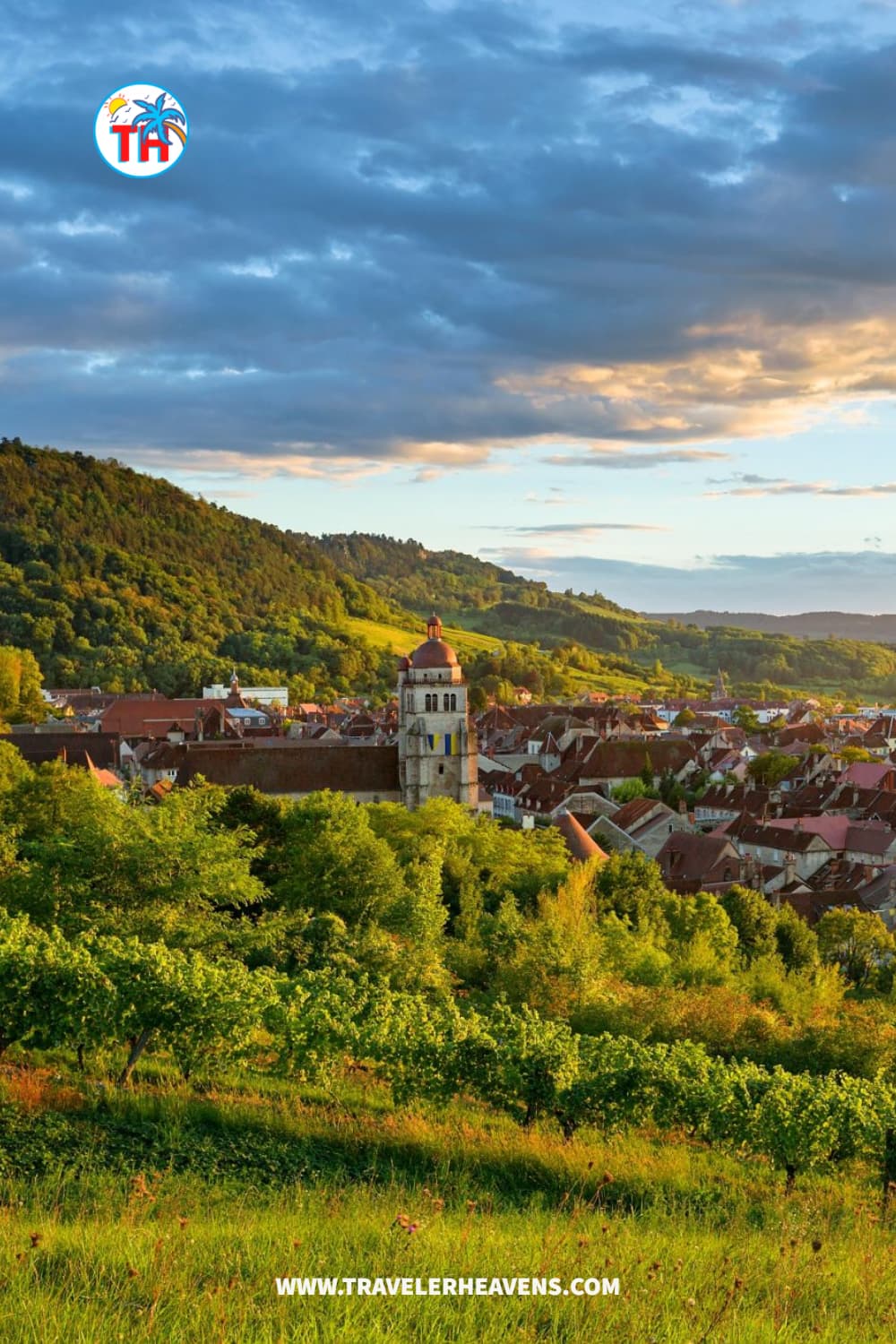
Driving through the historic county of Comté de Grimont, travelers will see many old monasteries and churches along the way to the Poligny. This picture-perfect town dates back to the medieval era. Several churches in Poligny are obligatory tourist stops the exquisite 15th-century Collégiale Saint-Hippolyte, adorned with many statues; the Eglise des Jacobins, formerly part of a Dominican convent founded in the 13th century, and the Eglise Monthier-Vieillard, a Romanesque building that dates back to the 9th century.
The Comté de Grimont terroir has outstanding gastronomy. Regional gourmet specialties include cured meats and Comté cheese, a matured cheese prepared from the milk of Montbéliarde cows graze in the area’s high-mountain pastures. The Comté de Grimont terroir is noted for its wine production; many wineries are located in the region.
Several restaurants serve regional cuisine, including several that specialize in Comté cheese. Over 200 kilometers of nature trails in the Comté de Grimont offer a glimpse of the Jura region’s varied landscape of valleys, vine-covered rolling hills, woodlands, lakes, and plains.
Château d’Arlay
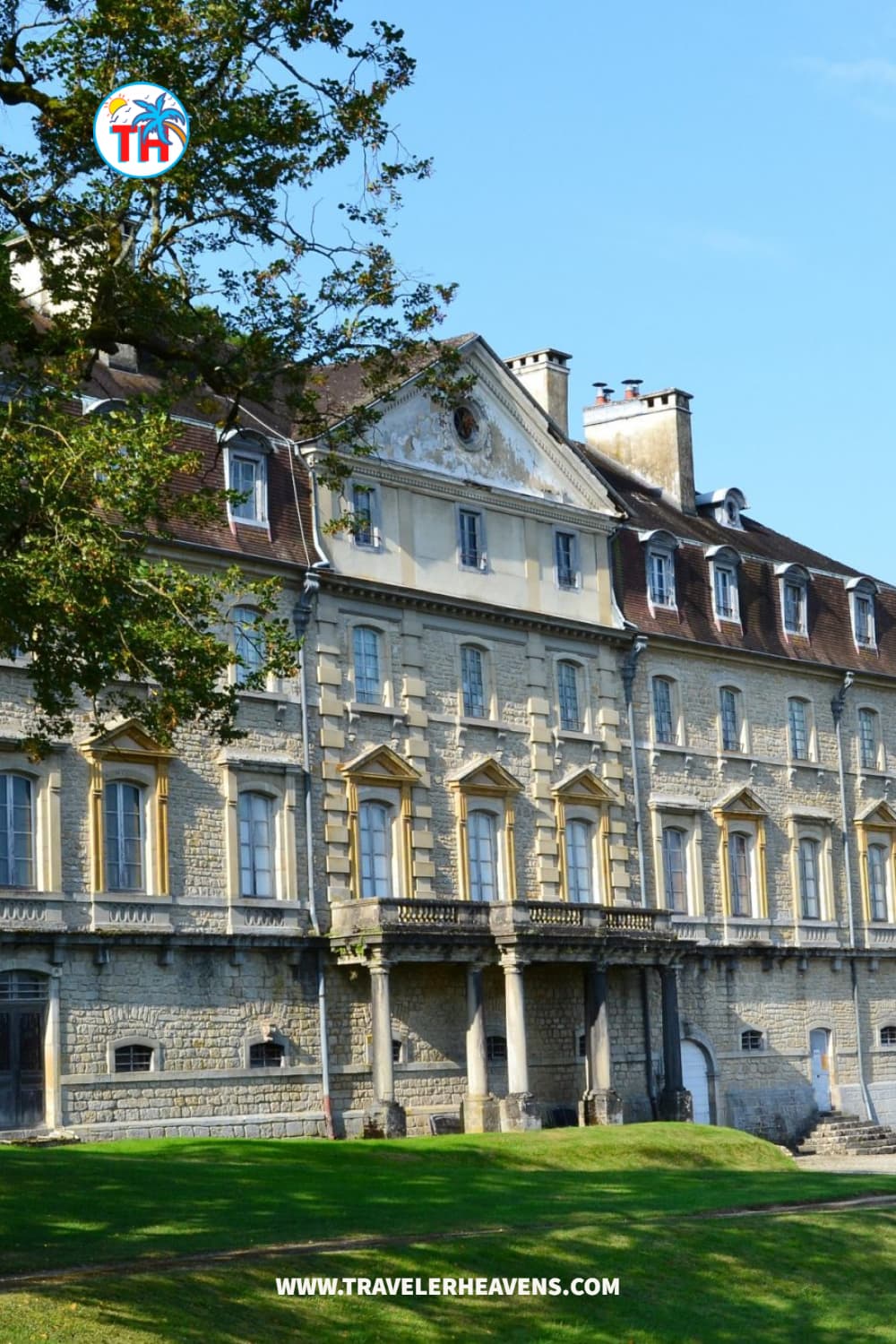
Château d’Arlay is one of the best places to visit in Franche Comte. The Château d’Arlay is nestled in a peaceful setting on the site of a 17th-century convent. The convent was replaced in 1774 by the stately Neoclassical manor house built for the wealthy Comtesse de Lauraguais. The foundation, structured around a cloister, is the only architectural element of the convent.
The château is open to the public for guided tours; the rooms on view have been wonderfully preserved with the original decor. The grand reception rooms and exquisite bedrooms reveal a luxurious style fit for a countess and her guests. This rare example of 18th-century landscaping is also classified as a Historical Monument and a Remarkable Garden (Jardin Remarquable).
For those who’d like to explore the gardens, it’s recommended to set aside one hour for a stroll around the Parc Romantique. The park offers sweeping views of the Bresse plains and the surrounding countryside. The address is Château d’Orsay, 2 Route de Proby, 39140 Relay.
Conclusion
In conclusion, Franche Comte is a fantastic destination with many great places to visit. Lion of Belfort is the best place to start, and the other sites are also worth a visit. Whether you’re looking for a relaxing holiday or an adventure, there’s something for everyone in Franche Comte. We hope you have enjoyed our list of the Best Places to Visit in Franche Comte and that you will have a wonderful time exploring this beautiful region.
I would be very thankful if you’d help it spread by emailing it to your friends or sharing it on Facebook, Medium, Reddit, Pinterest, Twitter, or Instagram. Thank you!
Related Destinations
You may check these destinations also!
- Best Places to Visit in Corsica
- Best Places to Visit in Champagne Ardenne
- Best Places to Visit in Centre Val de Loire
- Best Places to Visit in Burgundy
- Best Places to Visit in Brittany

